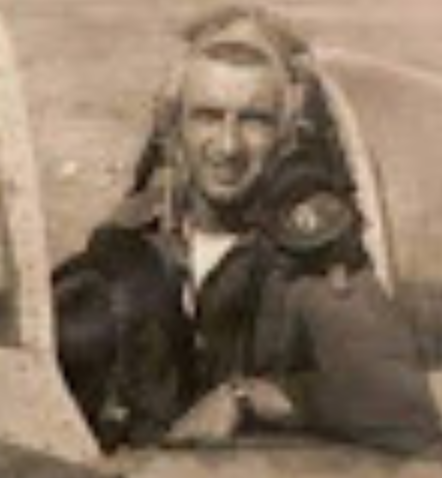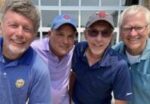Twenty years. Sometimes, 9/11 seems like forever ago and sometimes, the horrors of that day hit me — and probably you — as if it was yesterday.
As the guy who did many of the South Bend Tribune’s 9/11 stories with local angles, I talked to survivors, witnesses, family members and others who were deeply affected by what happened in New York City, Washington, D.C., and a field in Pennsylvania.
Two stories have always stayed with me — those of South Bend Adams High School graduate Katie McCloskey, who died that day while working on the 97th floor of the north tower, and of Bob Pinkowski, who was ready to rejoin the military and fight the terrorists who had wreaked the havoc during one of our country’s saddest days.
I’ll tell Bob’s story today. I’ll save Katie’s for the anniversary.
Like Katie, Bob is gone now. But then he already was 82 years old when 9/11 happened. He had been a fighter pilot in World War II, flying 124 missions and surviving two crash landings after being shot down.

Yeah, he was 82 when he stormed into the Air Force recruiting office the day after 9/11 and said he wanted to re-enlist. Tears in his eye, torment on his face.
“I wanted to get those guys who killed all those innocent people,” Bob told me not long after
The recruiters didn’t laugh at him. They admired his spunk and patriotism. But they told him no. Bob, a South Bender all his life, hadn’t flown for 15 years. And he was 82.
“I know a lot of people might not have thought I was serious because of my age,” he said. “But I was.”
He had demonstrated in his youth that he had enough courage and craziness to volunteer for just about anything. He suffered what later was determined to be a hairline fracture to his skull on one crash landing but he hid his injury so he wouldn’t be yanked from his squadron.
His other crash put him behind enemy lines in Italy. He sat on a rock beside his ruined P-47 Thunderbolt with his pistol in hand, waiting to see if the enemy or the Allies got to him first.
Fortunately, a U.S. tank picked him up and then dropped him off with a mule team taking supplies over the Apennine Mountains. His had been an early-morning mission and Bob had left his pajamas on. He just pulled his flight jacket over them.
“When the sergeant (with the mule train) realized I was in my pajamas, he gave me the uniform of a dead British soldier to wear,” he recalled.
After the war, Bob returned to South Bend, worked as a printer and insurance agent and raised three kids with his wife Rita. A feisty little guy at 5-foot-6, he proudly stated that he was part Polish, part Irish and part Blackfoot.
Bob was a prime example of the Greatest Generation and a guy who never thought he would see another day like Pearl Harbor. But then 9/11 happened. And at 82, he was ready to fight again.
When I was on the public speaking circuit — doing my duty as one of the “faces” at the Tribune — I liked to mention Bob.
While talking to a group at Little Flower Church, I told his story for maybe the dozenth time. Afterward, a man approached me and said, “We had Bob Pinkowski’s funeral here at the church earlier today.”
I didn’t even know he had died. I only hoped that my words about him did him justice and that he would have approved. I felt both humbled and privileged.
And I continued to feel the same way any time I told his story.
Fast forward a few more years. While I worked part time as a travel host for Edgerton Travel Service, I would get up on long bus rides and tell stories, Bob’s included. By that time, I was adding the part about his funeral and my unplanned eulogy at Little Flower Church.
‘ On one trip, we were heading into Moab, Utah — 1,400 miles from home — when I shared Bob’s story. A half-hour later, we were at our hotel and a couple of us met in the bar to wet our whistles.
“Where you from?” the bartender asked.
“South Bend, Indiana,” I proudly answered.
“Really,” she said. “Then you might have known my late father-in-law, Bob Pinkowski.”
